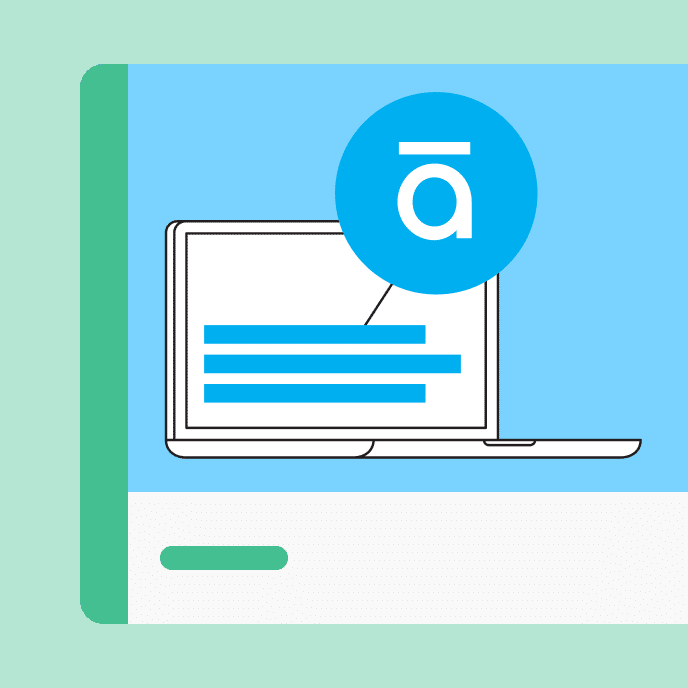How to Train a Global Workforce With E-learning Localization
Unlock the benefits of e-learning localization for training global teams or multilingual workforces.

The modern workforce is global, and training needs to adapt
Today’s companies are increasingly operating with multilingual, culturally diverse workforces. Almost a third of employees are non-native speakers of their company’s primary language. Global digital employment is on the rise. And international expansion remains a strategic imperative for many leading companies.
These trends make one thing clear: The need for adapting workplace training across different languages and cultures has never been more critical.
One powerful solution? E-learning localization.
In this post, we’ll highlight what e-learning localization means, how it differs from translation, and why it benefits employees and businesses alike. At the end, you’ll also find three ways you can start preparing for the e-learning localization process today.
Key Takeaways
What is e-learning localization—and how does it differ from translation?
Online employee training localization involves adapting e-learning courses for culturally and linguistically diverse workforces. This process includes translating text to different languages—but it also extends beyond that. E-learning localization tailors the greater learning experience to resonate with employees’ cultural context, values, and learning styles.
For example, in addition to accurately translated content, localization ensures that currencies, multimedia content, user navigation elements, idioms, and examples all make sense for the target audience.
Translation is about the language. Localization is about the entire learning experience.
Why does e-learning localization benefit employees and businesses?

Localized online training can help employees learn faster, understand and retain information better, and feel more engaged. It also contributes to a safe, inclusive, and compliant workplace. Unpack these business benefits—and more—below.
1. Increase speed and effectiveness
The brain processes our native language more quickly and easily than other languages, according to MIT research. This makes localized training a powerful tool for improving learning speed, understanding, application, and retention.
2. Boost employee engagement
Personally or culturally relevant training is also shown to increase engagement. E-learning materials that resonate with employees’ cultural nuances, values, and communication styles makes the training more relatable and compelling. This leads to higher rates of employee participation and investment in workplace learning and development initiatives.
3. Foster an inclusive workplace
Providing localized training in multiple languages demonstrates a company’s commitment to diversity and equity. It ensures that all employees, regardless of location, have access to equal professional development opportunities, promoting a more inclusive and supportive work environment.
4. Improve training quality and consistency across locations
Localization enables companies to address local needs—while still providing standardized training across regions. This can increase the overall quality and consistency of employee learning and development (L&D) programs.
5. Enhance workplace safety and compliance
Accurate translations are essential for effective compliance training. OSHA estimates that language barriers contribute to 25% of workplace accidents. Providing safety training in employees’ native languages helps prevent miscommunication that could lead to accidents, injuries, or even fatalities.
Additionally, different countries have different laws and industry regulations related to data privacy, workplace safety, labor standards, and more. Localizing training ensures that your e-learning courses meet these unique legal and compliance requirements, minimizing the risk of violations and costly penalties.
How should I start preparing for localization?
Businesses can maximize the benefits of e-learning localization by planning for it early in the design process. By anticipating the need for translation and localization, you can create training content that’s flexible and scalable from the start, making the adaptation process smoother and more efficient. Below are three examples of instructional design choices you can make today to streamline full-scale e-learning localization in the future.
Use modular formats in content design
First, consider creating online courses in modular formats, where each module covers a specific topic or skill. This approach allows you to easily replace or adapt individual modules for different cultural contexts without overhauling the entire course.
Choose neutral or universal visuals
Second, prioritize visuals that are universally relatable or easily adaptable, avoiding culturally specific symbols or imagery. For example, if you’re creating an e-learning course on teamwork, use general images of diverse groups collaborating rather than culturally specific scenarios. This approach not only aids in localization but also appeals to a broader audience.
Create a writing style guide that promotes easier localization
Clear, concise content is easier to localize and translates better across different languages and cultures. To facilitate this, develop a writing style guide for your e-learning development team that emphasizes the following guidelines:
- Avoid idioms, slang, and cultural references that may not be understood by global learners. For instance, instead of using the phrase “hit the ground running,” which might be unfamiliar in certain cultures, say “start working immediately.”
- Simplify your language to ensure clarity, and focus on universal concepts that can be easily understood across various cultural contexts.
Also consider adding preferred term glossaries or FAQs that can be easily updated as translations are made. This practice provides clarity and consistency in terminology.
E-learning localization is the secret to effective global training
The bottom line? Investing in localization pays off by increasing the effectiveness of your employee training programs and expanding their global reach. Whether you’re just beginning to expand into new markets or you’re already supporting a multinational or multilingual workforce, planning for localization from the start will help ensure your L&D initiatives resonate with every learner, everywhere.
Localized training gives everyone access to professional development opportunities, contributing to a greater culture of learning. Discover related benefits in our blog, Why a Learning Culture Makes for Happy, Productive Employees.
You may also like

A Culture of Giving Back: Articulate’s First Impact Campaign
Articulate’s first annual Employee Impact Campaign showcased how purpose and generosity drive change—and how small actions can result in a big impact.

